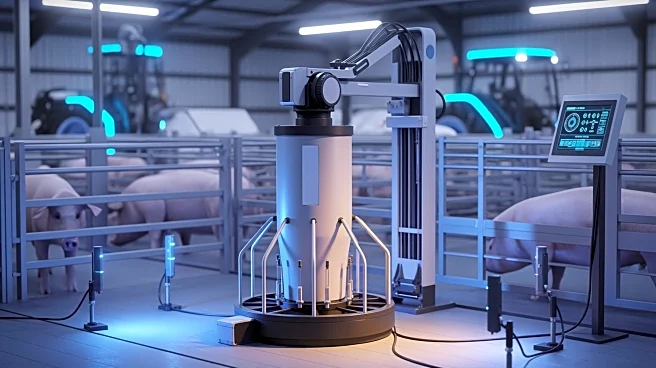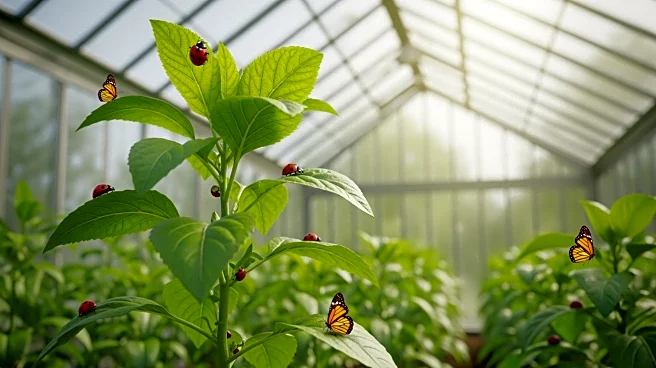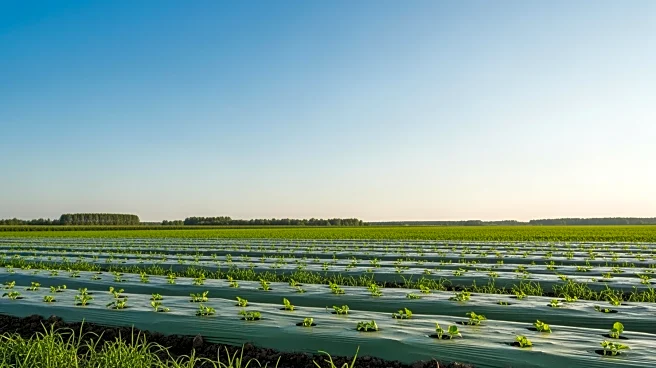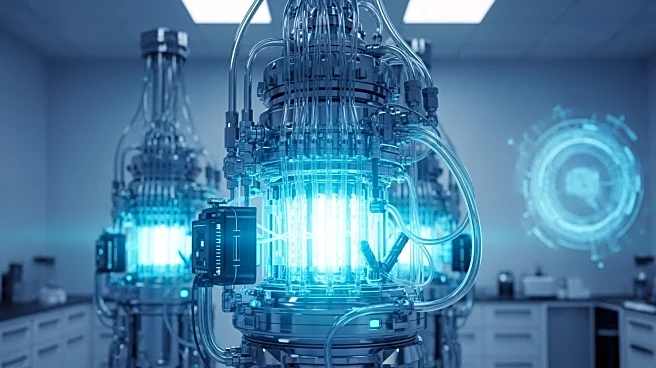What's Happening?
Agricultural drone spraying is gaining traction as a method for applying pesticides, herbicides, fertilizers, and other treatments over fields using unmanned aerial vehicles (UAVs). These drones are equipped
with tanks and spraying mechanisms to ensure even distribution of chemicals onto crops. The technology is being adopted due to its precision and operational efficiency, with the market projected to grow significantly. The crop spraying drone market is expected to reach $3.41 billion in 2025, up from $2.47 billion in 2024, with a compound annual growth rate of 38.3%. Factors driving this growth include precision agriculture practices, labor constraints, regulatory developments, and sustainability initiatives.
Why It's Important?
The rise of agricultural drone spraying is significant for U.S. farming as it offers a solution to labor shortages and enhances precision in chemical application, reducing environmental impact. By minimizing chemical runoff and exposure, drones contribute to safer farming practices. They also provide operational flexibility, especially in challenging terrains, and can lower operational costs compared to traditional methods. As the technology advances, it supports sustainable farming practices and aligns with evolving regulatory standards, potentially transforming agricultural operations and improving crop management.
What's Next?
The future of agricultural drone spraying involves integrating drones into smart farming systems, utilizing AI and machine learning for adaptive spraying and real-time optimization. Advances in battery technology and alternative power sources are expected to extend flight times and payload capabilities. Swarm technology, involving coordinated fleets of drones, may offer large-scale spraying solutions. These developments could further align with sustainability efforts and regulatory frameworks, promoting environmentally responsible practices. The market is anticipated to expand significantly by the end of the decade, driven by technological innovation and greater accessibility.
Beyond the Headlines
Despite the benefits, challenges such as limited payload capacities, weather sensitivity, and regulatory compliance remain. Operational expertise and upfront costs are barriers to adoption, particularly for smallholder farmers. Addressing these challenges through technological advancements and supportive policies will be crucial for maximizing the role of drones in agriculture. The integration of drones with existing agricultural systems and continued research will play a critical role in shaping their future impact.











